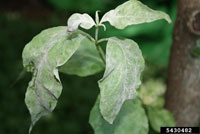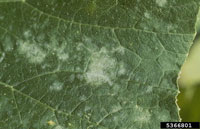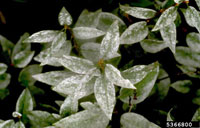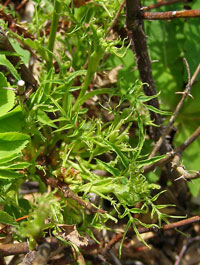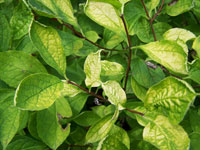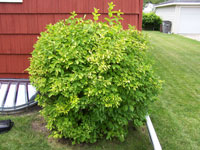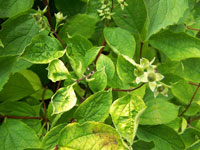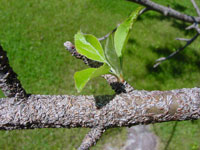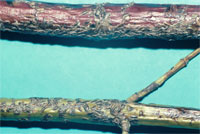Extension > Garden > Diagnose a problem > What's wrong with my plant? > Deciduous > Chokeberry > Leaves discolored white, yellow, or pale green
Chokeberry > Leaves > Leaves discolored white, yellow, or pale green
1 of 4
Powdery mildew
Erisyphe polygoni
- White spots or blotches on leaves
- In severe cases leaves and young shoots may be completely covered with white powdery fungal growth
- Leaves may be stunted, curled or puckered
- Red or purple blotches may occur on upper leaf surfaces
- More information on powdery mildew
2 of 4
Non-selective herbicide injury
(Round-up, Kleen-up, and other glyphosate products)
- Yellowing, wilting, browning leaves and eventual death of foliage and plants
- Damage usually appears first in new tissues
- Shrubs sprayed during the summer or fall may not have noticeable injury until the following season when leaves appear as stunted, narrow, strap-like, and chlorotic
3 of 4
Plant growth regulator herbicide injury
(2,4-D, Dicamba, etc.)
- Leaves, stems, and petioles are twisted, distorted, and/or cupped
- Leaves may appear thick and leathery with parallel veins
- Youngest tissue at branch ends affected
- Distorted growth accompanied by or followed by leaves that turn brown or yellow
- More information on plant growth regulator herbicide injury
4 of 4
Oystershell scale
Lepidosaphes ulmi
- Light to moderate infestations show little or no symptoms
- Severe infestations can cause chlorotic, stunted foliage
- Dieback and cracked bark can result from heavy infestations
- Light to dark brown, elongated, 1/10 to 1/8 inch long oyster-shell shaped scales found on bark
- More information on Oystershell Scale



